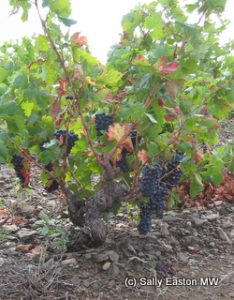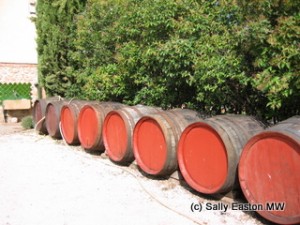Roussillon: a region for all seasons
A version of this article first appeared in FD magazine, December 2005.
Deep in the far south of France, edging its southern borders into the foothills of the Pyrenees, and commanding a Mediterranean coastline to the east, lies Roussillon, the sunniest and driest region in France. Its vineyards cover about the same acreage as those of Champagne, and it is more often than not tacked onto to its much bigger neighbour, making a region covering the whole of southern France – Languedoc-Roussillon. Yet the wines of Roussillon have an identity and expression all their own.
Roussillon is drenched in both sunshine and history. Vine growing can be traced back thousands of years. And in a similar manner to Alsace, over the centuries Roussillon has passed back and forth between Spanish and French ownership, finally being settled in France in 1659. In the region’s main city, Perpignan, it is the Palace of Kings of Majorca that holds the city in its gaze, now an historic and tourist monument. Catalan culture remains strong and many people are bi-lingual.
The region has a complex geology, and much that producers speak of is to do with their terroir, and which patch of dirt best suits which of the grape varieties are used in the region.

Grenache bush vine
Red grape varieties are mainly an extension of those from the better known southern Rhône: grenache, mourvèdre, cinsault, supplemented by carignan, the best examples of which add colour, depth, acidity, and a black fruited meaty spiciness to the blend. As with neighbouring Languedoc, syrah has been planted for the past 30 years or so, to add with the local varieties. Whites are based on grenache blanc and increasingly roussanne, marsanne, plus muscat (Alexandria and petits grains) for sweet wines.
What’s rare in a dry, sunny climate is to find white wines with a freshness and minerality that is characteristic in Rousillon. Part of the explanation is altitude. Vineyards are found from sea level up to 550m above the sea. With an approximate 1°C drop in temperature for every 100m increase in altitude, combined with a tortured topography, it’s possible to envisage cooler plots of land at higher altitudes and aspects away from the sun where white grapes can flourish.
The dry, sunny climatic disposition of Roussillon enables producers to make some excellent wine to organic principles. Without regular moisture, disease pressure is low, lending viticulture to minimum intervention practices. Domaine Gauby, one of the top producers in Roussillon farms to the more rigorous biodynamic approach. Fourth generation Philippe Mercier, of Domaine Joliette which produces certified organic wines, explained: ““Organic is more a work of observation. I learn a lot by being near to the vines. You need to be near the vineyard to understand the vines and their treatment.”
One of the best open secrets of this self-contained Catalan enclave is the region’s varied fortified wines. Called vins doux naturel (VDN), these are made by adding pure grape spirit to partially fermented grape juice, to create a sweet wine. The characteristics of the grapes are preserved by using pure spirit, rather than grape brandy.
Maury, and its more famous cousin, Banyuls are made from red grapes, notably grenache, while Rivesaltes is from white. The wines can be made in more reductive (primary fruit) or more oxidative (nutty, dried and candied fruits) styles. These latter, tuilé (tawny) styles of red VDN and ambré (amber) styles of white VDN, are a perfect accompaniment to traditional English winter season fare.

Vin Doux Naturels, maturing outside
Of his Maury, Robert Pouderoux, of Domaine Pouderoux said: “We try to finish on freshness, not sugar. If you have a good tannin structure, then even with 100g/l of sugar, you don’t see the sugar, also if you have a good acidity. All the work is the balance of these three – tannin, acidity and sugar.”
Muscat de Rivesaltes is always reductive, always to be drunk within a year after the harvest. Gentle, grapey, aromatic, with an elegance and lightness of touch despite the sweetness.
As concern increases about higher alcohol levels in wine, Vins doux naturels could find themselves becoming fashionable once more. They consistently have an alcohol level of about 15% abv. This is undoubtedly similar or even lighter than muscular Australian shirazes or Californian zinfandels. At just three-quarters the alcohol level of port, they also offer a different style of digestif.
Eric Aracil, export manager for the promotional body Vins du Roussillon has suggested ““marrying the colour of wine with the colour of dessert”, which is a new twist on the idea that the wine should be as sweet as, if not slightly sweeter than, the dessert. Certainly across the styles of VDN, almost every colour can be catered for, from the palest lemon tart Muscat de Rivesaltes to the densest, darkest, most chocolatey Maury.
This article was inspired by a visit to the region sponsored by Wines of Roussillon (Vins du Roussillon).



